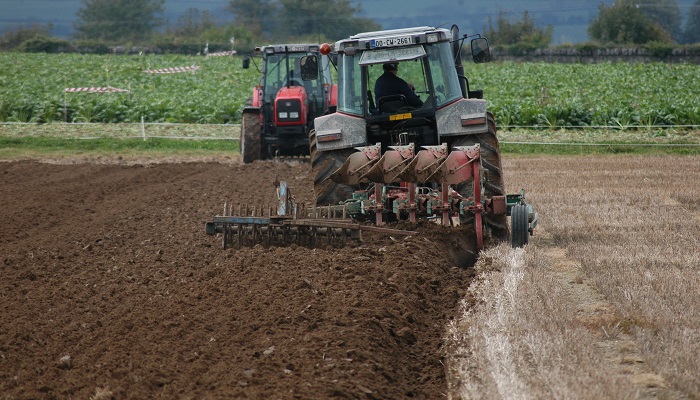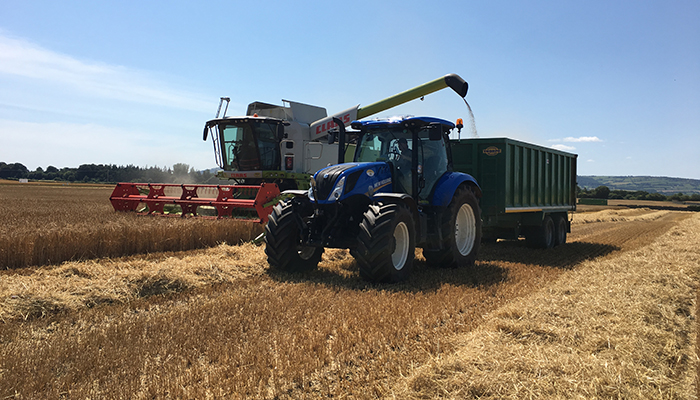15 February 2024
Variable cost respite for cereal crops

Despite challenges aplenty in the tillage industry, there appears to be some good news in the form of a variable cost respite for cereal growers.
Prepared as an indicative guide on crop margins by Teagasc Crops Specialists Ciaran Collins and Shay Phelan, the Crops Costs and Returns 2024 shows that there is little difference in margins between feed cereals, but variable costs – the cost associated with producing the crop – are expected to be back considerably when compared to the predictions made in the same publication in 2023.
Feed wheat
Back in January 2023, the predicted variable costs associated with winter and spring feed wheat were estimated at €2,199/ha (excl. VAT) and €1,798/ha (excl. VAT), respectively. This year, however, the indicative variable costs associated with winter and spring feed wheat are €1,711/ha (excl. VAT) and €1,430/ha (excl. VAT), respectively. This decline has occurred largely due to a reduction in materials, machinery hire and miscellaneous costs, with the most notable cost decline being in fertilisers, falling €498/ha (excl. VAT) in the case of winter feed wheat and €370/ha (excl. VAT) for spring feed wheat from the 2023 to the 2024 cropping period. This reduction is largely due to decline fertiliser prices and, to a lesser extent, altered fertiliser strategies.
On account of this variable cost reduction, the breakeven yields (grain only) required for winter feed wheat has declined by 1.1t/ha – moving from 9.2t/ha in 2023 to 8.1t/ha in 2024. Likewise, a reduction in the breakeven yield for spring feed wheat is also anticipated – moving from 7.5t/ha in 2023 to 6.8t/ha in 2024.
The Crops Costs and Returns 2024 also points to a fall in the expected grain price for feed wheats in 2024 – back by €30/t on the corresponding prediction in 2023 – but on account of lower variable costs, the gross margins expected at harvest time (included straw yields and at target yields) are expected to rise for both winter and spring variants of feed wheat this year.
Feed barley
Although challenges arose at sowing time, growers who established winter barley crops appear to be in a better position in terms of the potential margins from these crops than this time last year – albeit only slightly. Overall, variable costs associated with the production of winter barley – provided the crop is established and requires no re-planting – are expected to decline by €345/ha. Again, this is largely due to a reduction in material costs – fertiliser in particular. Due to this decline in variable costs, the grain-only break even yield for winter barley is expected to be 8.1t/ha (8.6t/ha in 2023), while at targeted yields (including straw), gross margins of €671/ha are expected – up €45/ha on 2023.
On the spring feed barley front, total variable costs of €1,318/ha are expected, declining from €1,589/ha in 2023, once again driven by a decline in materials costs. Like the cereals mentioned above, this should result in a lower breakeven yield requirement – moving back from 6.9t/ha in 2023 to 6.6t/ha in 2024. Again at a targeted yield of 8.0t/ha, gross margins are only expected to increase slightly on the 2023 prediction, moving to €531/ha.
Malting barley
The potential margins from spring malting barley are also examined as part of the Crops Costs and Returns 2024, with the assumptions based on the availability of a malting contract and the fulfilment of this contract’s specification and quality requirements. Assuming a premium price of €40/t over feed barley, it’s predicted that breakeven yields (grain only) of 5.8t/ha are required in spring malting barley this year and at targeted yields (7.5t/ha), gross margins of €706/ha are envisaged.
Again like the above mentioned feed cereals, malting barley growers can expect some respite in terms of input costs, with variable costs expected to be €264/ha lower than in 2023 at €1,305/ha this year.

Examine your costs
Although the Costs Crops and Returns 2024 show a decline in the variable costs associated with the production of cereal crops, farmers have been advised to sit down and carefully examine their costs before returning to the fields this spring.
Ciaran Collins said: “Tillage growers are coming off the back of a challenging harvest and a difficult period for winter crop establishments. Careful examination of all costs on all farms is advised. We would strongly encourage all farmers to examine the Crops Costs and Returns 2024 and make adjustments for their own farm’s cropping potential, rotation plans, husbandry skills, input requirements and expected harvest prices.
“Machinery costs on all farms will be different. A thorough appraisal is required of your costs when budgeting for the year ahead. Teagasc has an excellent tool in the form of the Teagasc Machinery Cost Calculator, which is available from your local Teagasc Tillage Advisor.”
Shay Phelan added: “The Crops Costs and Returns 2024 is built on guideline costs and a number of assumptions, we would strongly encourage all tillage farmers to study the document, understand the inputs factored in and then complete a budget for their own farm using farm specific information.
“Where not already completed, farmers should complete a Teagasc eProfit Monitor to get a firm handle on the costs associated with their business in previous years. Yes, 2023 was difficult on tillage farms, but by completing a Teagasc eProfit Monitor over a number of years, trends can be tracked and informed decisions can be made in regard to future crop budgets.”
To access the Teagasc Crops Costs and Returns 2024, which also includes costings for winter and spring oats and forage crops, click here.
Also read: Careful assessment required before committing to re-sow
Also read: Scale of seed shortage becomes apparent
